Vegan Pâte Sucrée/Shortcrust Pastry
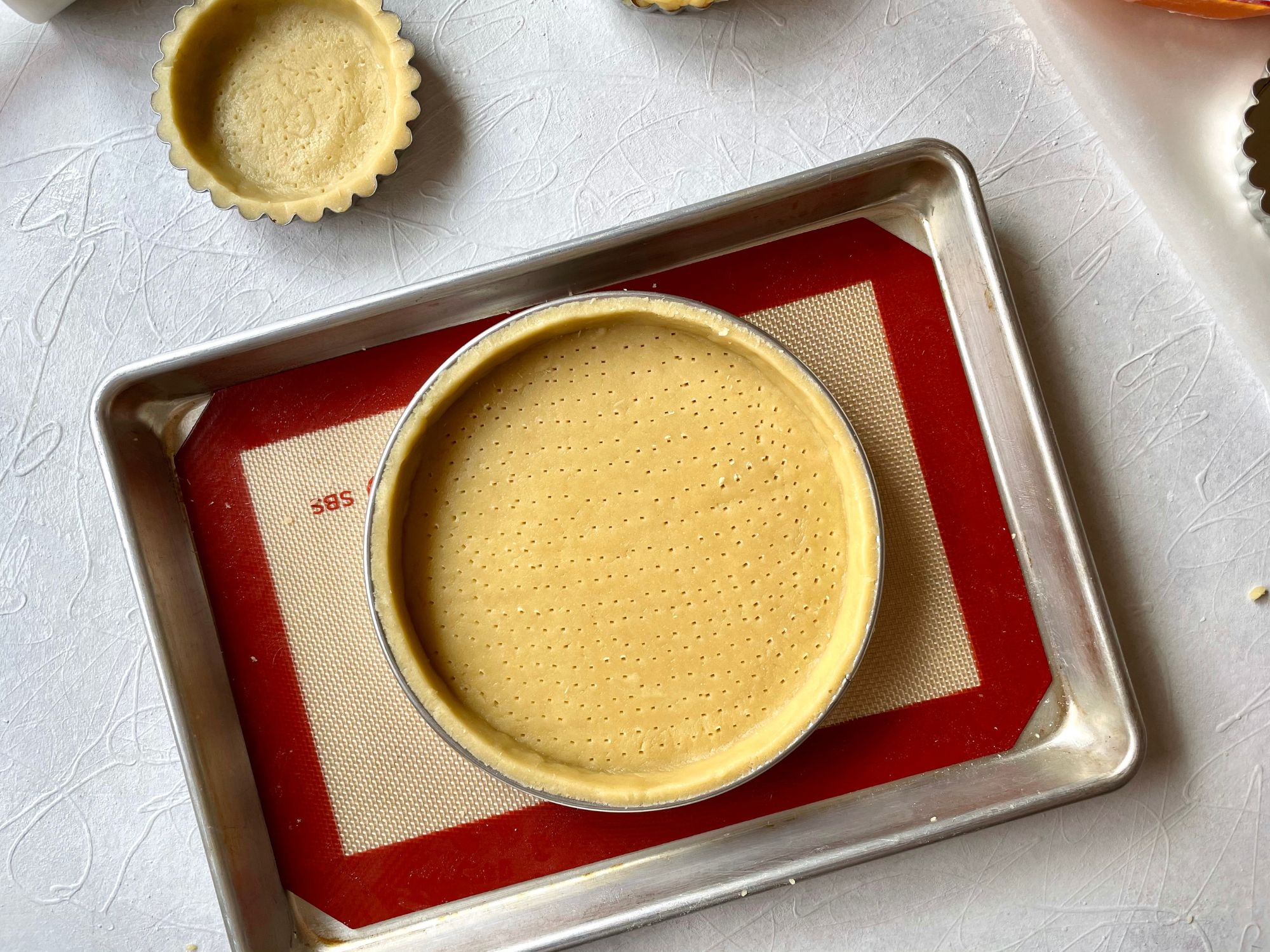
It’s about time I shared a vegan pâte sucrée recipe so we can get started on making all kinds of tarts on here. (First up will be a vegan strawberry tart so stay tuned for that). This is my go-to dough for making any kind of tart or tartlets. It’s versatile, you can flavour it with extracts, spices, zest, or even make a chocolate version of it. And, most of all, it’s simple to make.
What is pâte sucrée and what’s it used for
Pâte sucrée is a form of shortcrust pastry and one of three main french pastry doughs used for tarts. There’s pâte brisée, pâte sucrée and pâte sablée.
Pâte brisée is similar to pie crust in its ingredients but it yields a tighter, more dense crumb, unlike pie crust which is very flaky. On the other hand, pâte sablée, another shortcrust pastry, has a much more buttery, sweet and crumbly texture, most commonly helped by the addition of almond powder and egg yolks, but is also more difficult to work with.
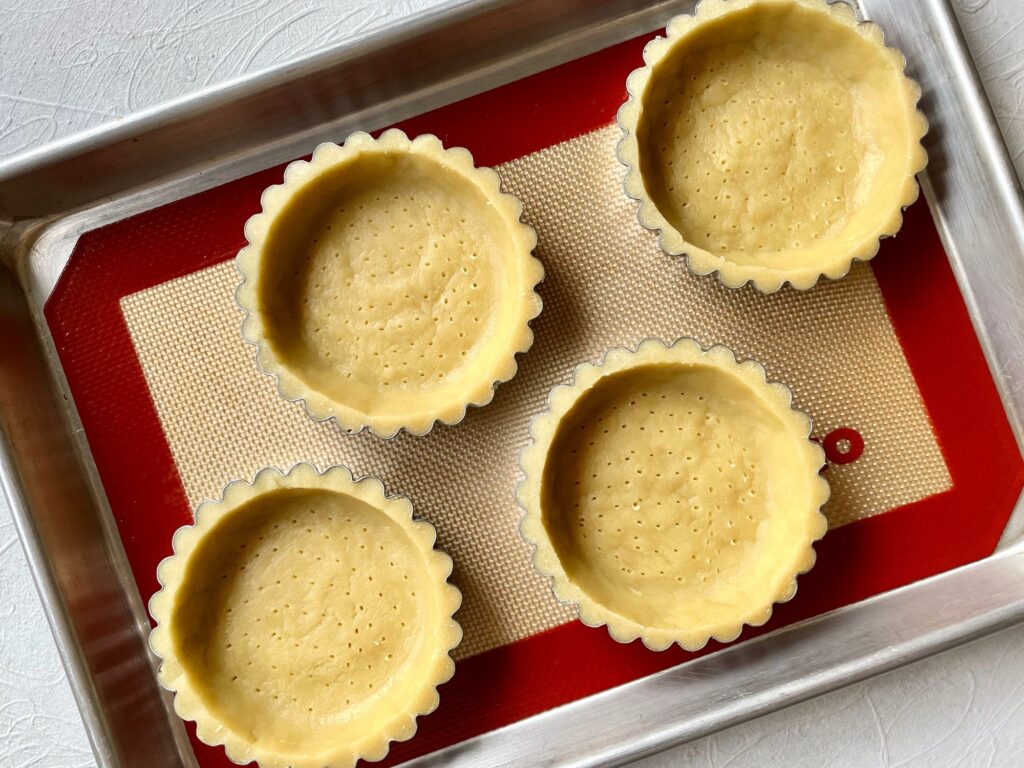
Pâte sucrée (literally “sweet dough”) falls somewhere in between. It’s the best of both worlds since it’s sturdier than pâte sablée and has more flavour than pâte brisée. It’s crisp, sweet, buttery, and basically tastes like a sugar cookie.
The ingredients used to make it are butter, powdered sugar, eggs (and sometimes yolks), flour, salt and sometimes vanilla. Some recipes also use almond powder, like this one. Although not necessarily traditional, it adds nice flavour, especially for a vegan pâte sucrée, and helps with that crumbly melt-in-your-mouth texture.
Pâte sucrée can be used for fruit tarts with custard, frangipane tarts, chocolate tarts…basically anything you don’t want to make in a pie crust. Although you could make all those things in a flaky pie crust as well. It just depends on the flavour and texture you’re going for, and if you want a top crust or not. Tarts are always uncovered whereas pies can have both a bottom and top crust.
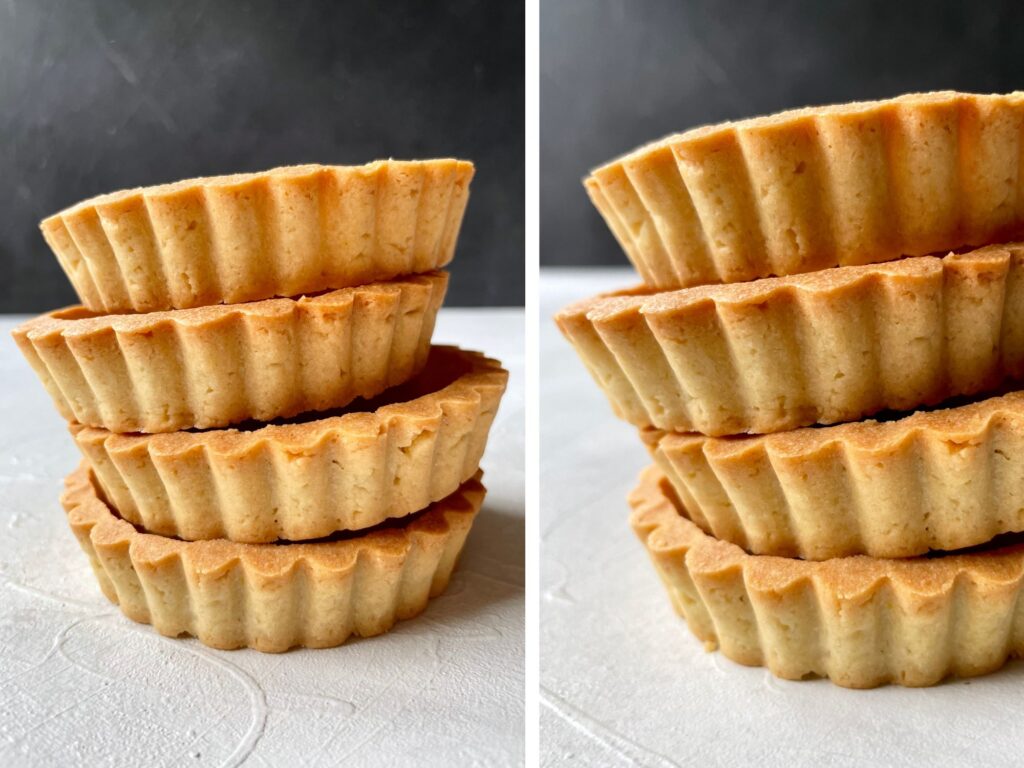
The ingredients
The basics
Butter. I used homemade vegan butter, but any vegan block butter will work. Avoid vegan margarine or vegan butter in tubs in general as they have a higher water content and will affect the texture of your dough and the way it bakes.
Salt. I always use regular ol’ table salt for my recipes. It’s very fine so it dissolves easily, and it’s what most people have. If the butter you’re using is salted, you can just leave it out.
Powdered sugar. This helps give that crumbly yet crisp texture to the tart shell and since there’s no creaming of the butter and sugar in this recipe, powdered sugar will incorporate and dissolve in the butter much more easily. Make sure to sift it to get rid of any lumps.
Cornstarch. It lightens the crumb but helps bind the dough while it bakes, and also prevents it from losing its shape or collapsing in the oven. You could also use potato or arrowroot starch.
Milk. Since this is eggless, the milk is what adds hydration to the dough. Any plant based milk will do here. Preferably unsweetened, but sweetened will also work. You could even use a vanilla flavoured one if you’d like.
Flour. Regular all-purpose flour works best in this recipe. Usually cake flour is used for shortcrust pastry to give it that really crumbly texture, but since there’s no egg proteins to bind and keep the whole thing together here, that would just make it too fragile. Not to mention a pain to work with.
The extras
Almond powder. It adds a nice buttery flavour to the dough and also helps with the tender crumb of the tart. You could even use hazelnut powder for a different flavour profile. If you want to keep the recipe nut-free, you can replace it with about 20g of all-purpose flour.
Vanilla extract or vanille bean paste. This is completely optional, it’s just for added flavour. You could use other extracts or even spices, herbs or zests.
How to make vegan pâte sucrée
Making the dough
You can make this recipe by hand or with an electric hand mixer or stand mixer. I prefer to make it by hand since it’s really easy and there’s no creaming involved, it’s really just mixing in each ingredient.
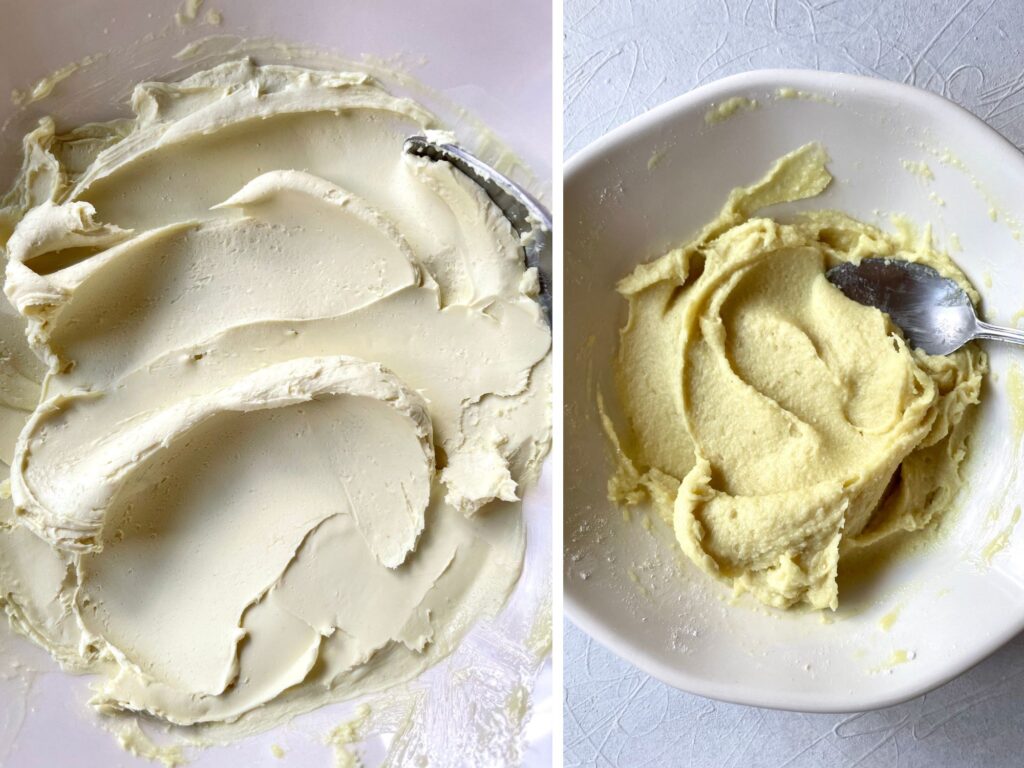
Start by working the butter alone just so it’s pliable. You want your butter cold but not rock hard since you need to be able to work it into the other ingredients. I like to use either a metal or wooden spoon in the beginning as to not break a rubber spatula (again). Then add the salt, powdered sugar and almond powder. The goal here is to just mix everything until homogenous, not to cream them. Creaming would incorporate air which would cause your dough to puff and bubble in the oven, which is not what we want.
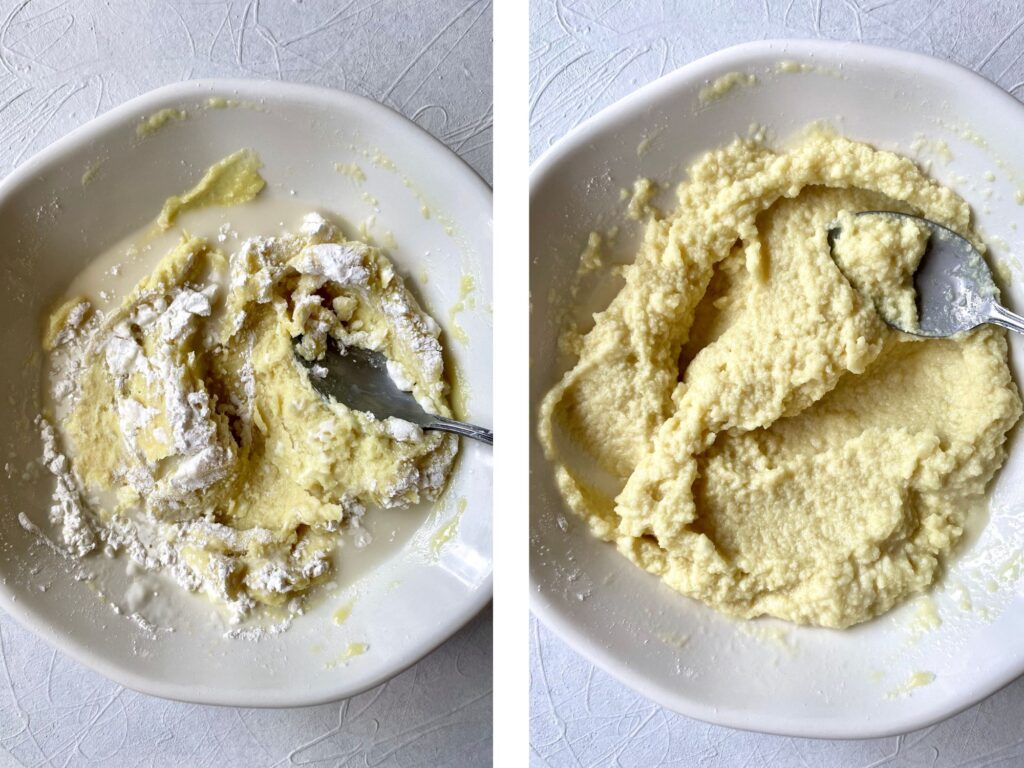
Once that’s smooth, stir in the milk and cornstarch. At this point the mixture will look completely split. That’s normal, don’t panic. Eggs usually emulsify in because they contain lecithin, but since we’re just adding milk into fat here, it’s going to split. It’ll come together once you start adding the flour.
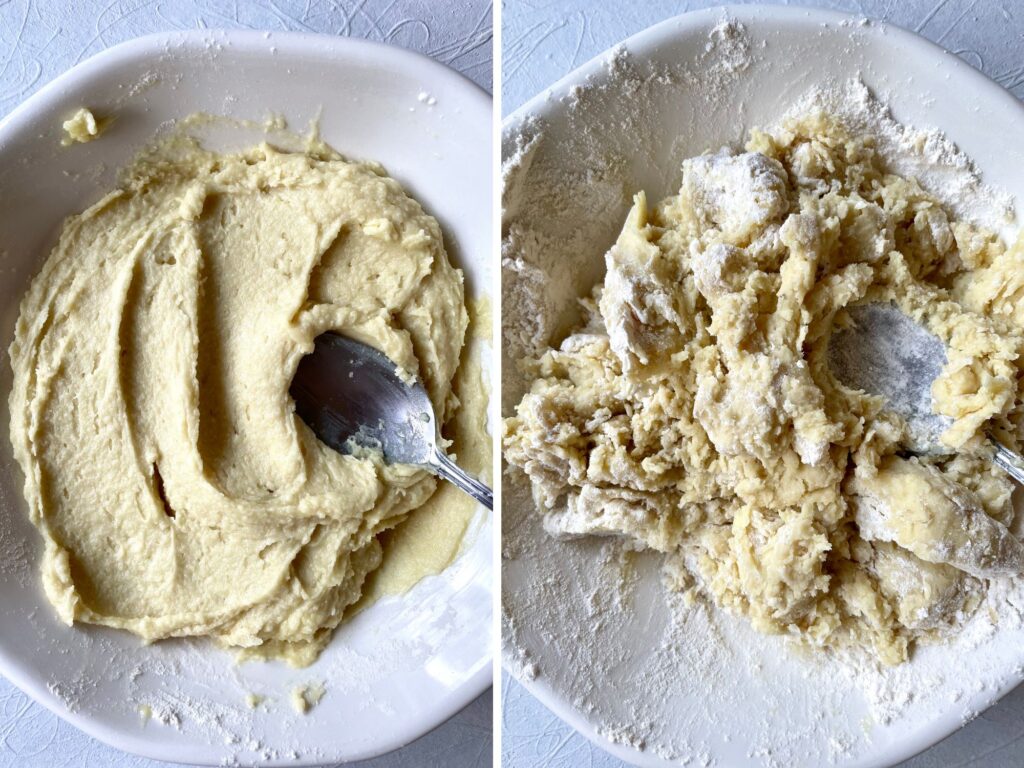
Stir in 100 g of the flour just to smooth out the dough, then add in the rest and work it in as much as you can, then go in with your hands to finish incorporating it. At this point you’re meant to “fraser” the dough, or in other words slowly smear the dough on the counter with the heel of your hand or a bench scraper to fully incorporate the flour without overworking the dough. But there’s no need to do that here.
Simply give the dough a few kneads to make sure no dry patches remain. Don’t knead it as if it were a bread dough, just a few kneads will do. We don’t want to overwork it and develop the gluten too much, that would make for a tough and dense tart shell.
Chilling it
Wrap it in cling film (or cling film alternative) and place it in the fridge for at least one hour or up to a week. You could also put it in the freezer for up to 2 months. The chill time allows the dough to harden so it’s easier to work with. It also allows the flour to hydrate and the gluten to relax so the dough doesn’t spring back while you’re rolling it or shrink when it’s baking. So I wouldn’t skip this step!
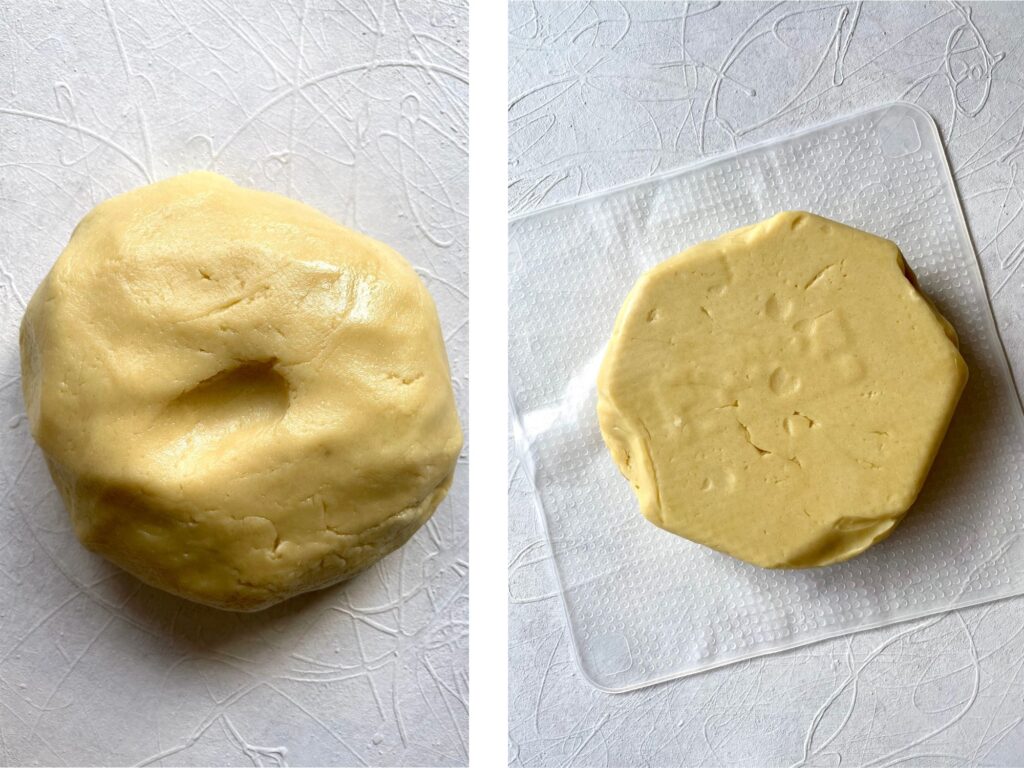
how to work with vegan pâte sucrée
Once you’re ready to work with it, place it on a well floured surface, on a piece of parchment, or between 2 pieces of parchment. I would recommend the parchment since it makes it easier to transfer to the fridge and the pie pan. If the dough is too hard to work with, you can let it soften slightly at room temperature for 5-10 minutes.
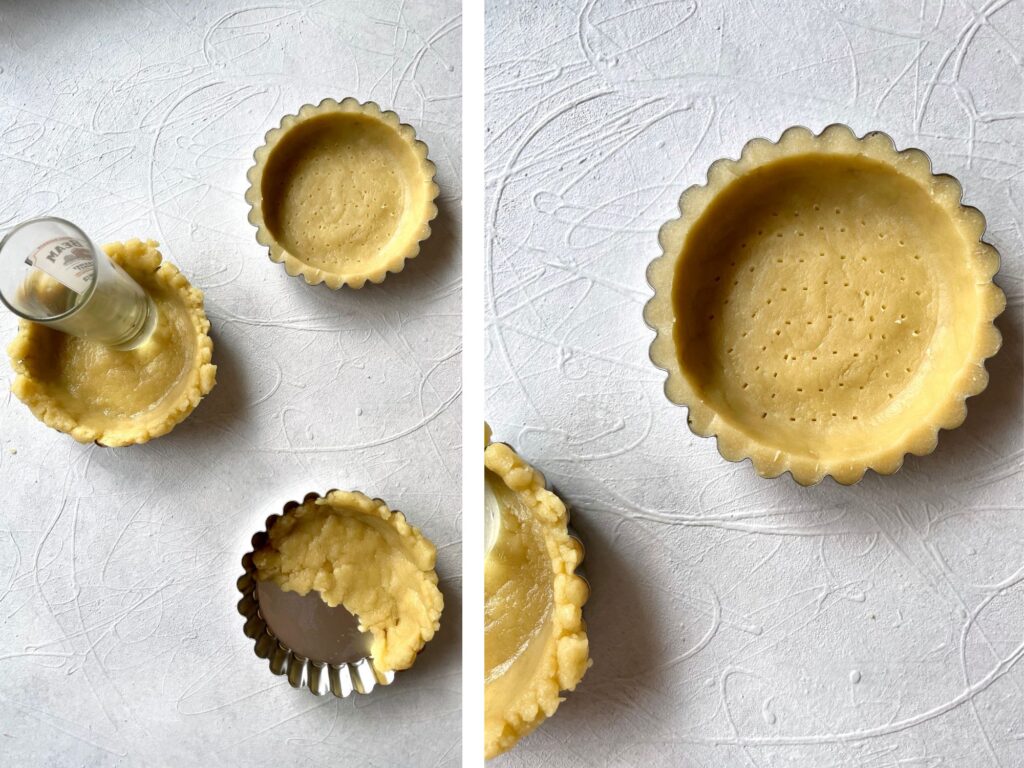
If you don’t want to deal with rolling out dough, you can also just grab pieces of it and press them evenly into your pie dish/pan to form the tart shell. Since there’s almond powder in the dough, it can be a bit harder to work with so that’s another great option. After you’ve pressed the dough into the pan, go over it with a flat-bottomed cup to even it out and trim the top flush with the pie pan using a paring knife.
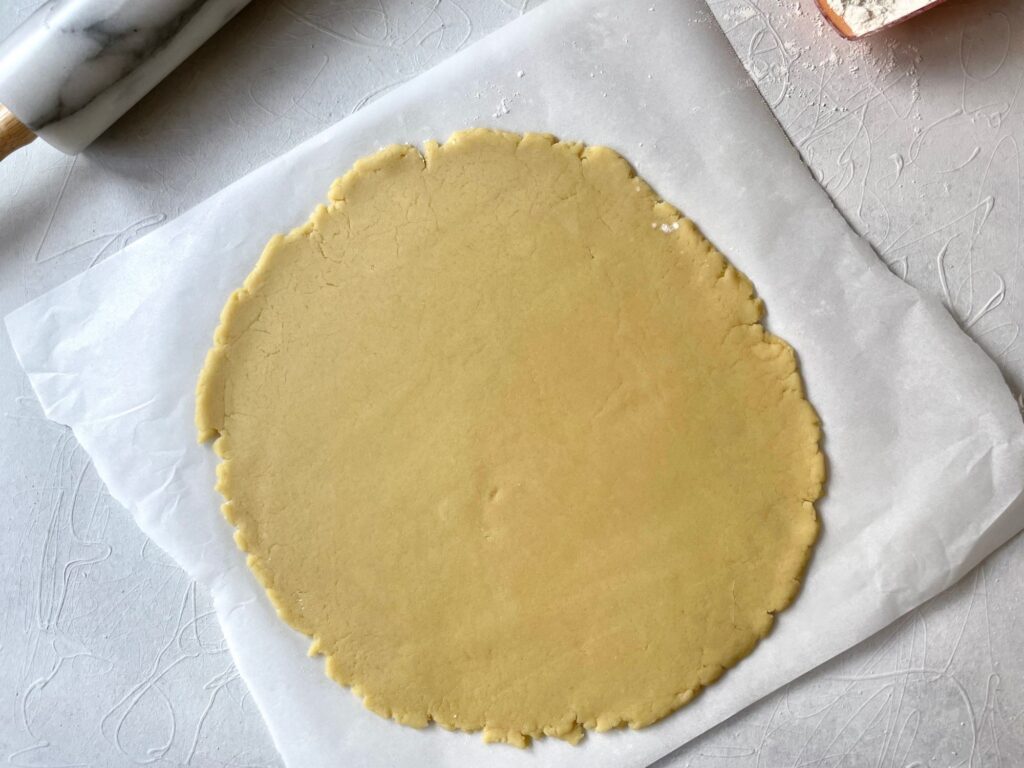
Whether you’re rolling it out or pressing it in, aim for a thickness of about 3-4mm/1/8 inch and no more than 6mm/1/4 inch. The thicker it is the longer it’ll last before getting soggy from the filling, but the harder it will be to cut and eat. So 4mm is a good in-between.
If the dough gets too soft at any point while you’re working with it, place it in the fridge or freezer to firm back up for about 10 minutes. As you’re rolling it out, you might notice it cracking around the egdes, that’s normal, your dough might just be too cold so it doesn’t have as much give.
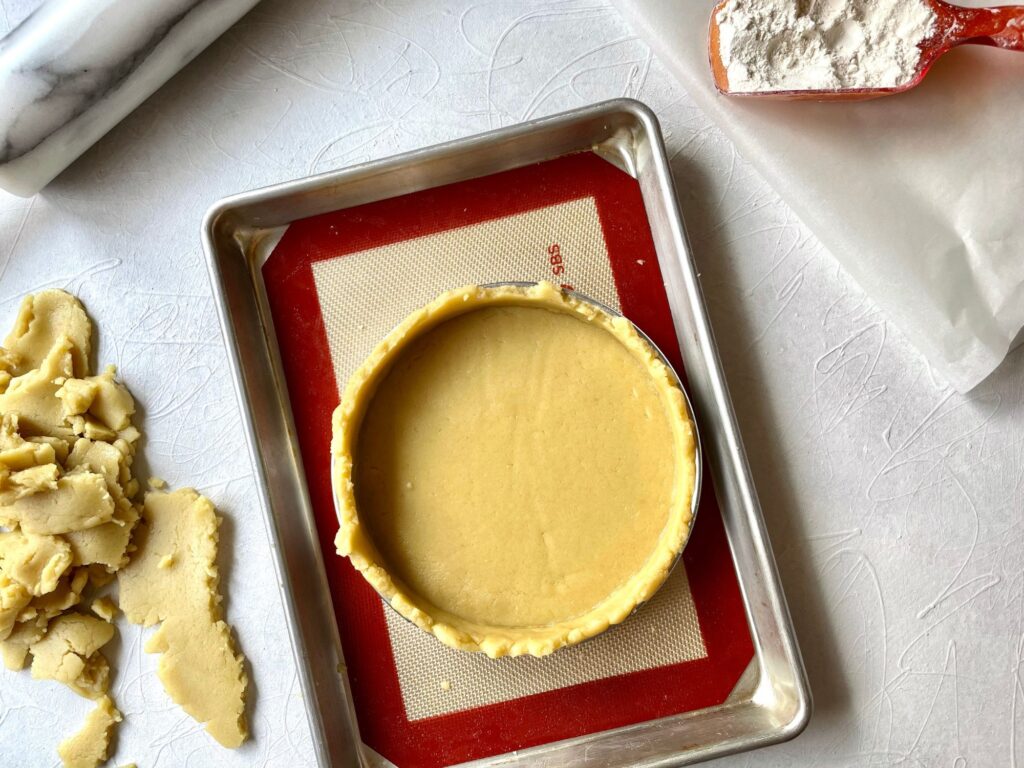
Once you’ve rolled it out to the right thickness and big enough to cover the whole pan, carefully transfer it to your pie plate. Draping it over your rolling pin isn’t the best option here as the dough is prone to cracking. I personally just flip the whole parchment right over the pan. Remove most of the overhang so it doesn’t weigh the sides down and start pressing the dough into the pan, making sure it’s well pressed into the corners. If there are holes or cracks, you can simply patch them with pieces of dough.
Baking vegan pâte sucrée
All that’s left is to dock it, trim off the excess, and bake! I like to put it in the fridge for about 10-15 minutes before trimming off the top to get a cleaner cut. Use a paring knife and simply follow the top edge of your pan to cut off the extra dough. Then dock the whole bottom using a fork. This will allow steam to escape and prevent your dough from puffing up as it bakes.
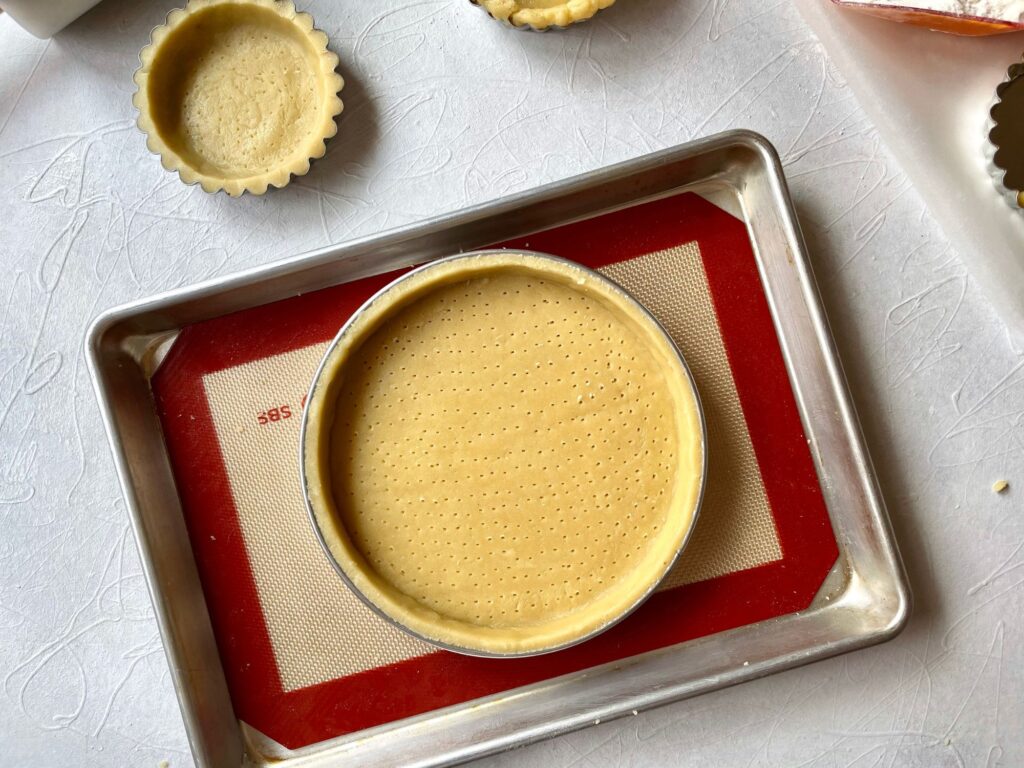
Place the whole thing in the fridge again for another 15-20 minutes before baking so the butter is solid when the dough goes into the oven. It’ll help the tart shell keep its shape while baking.
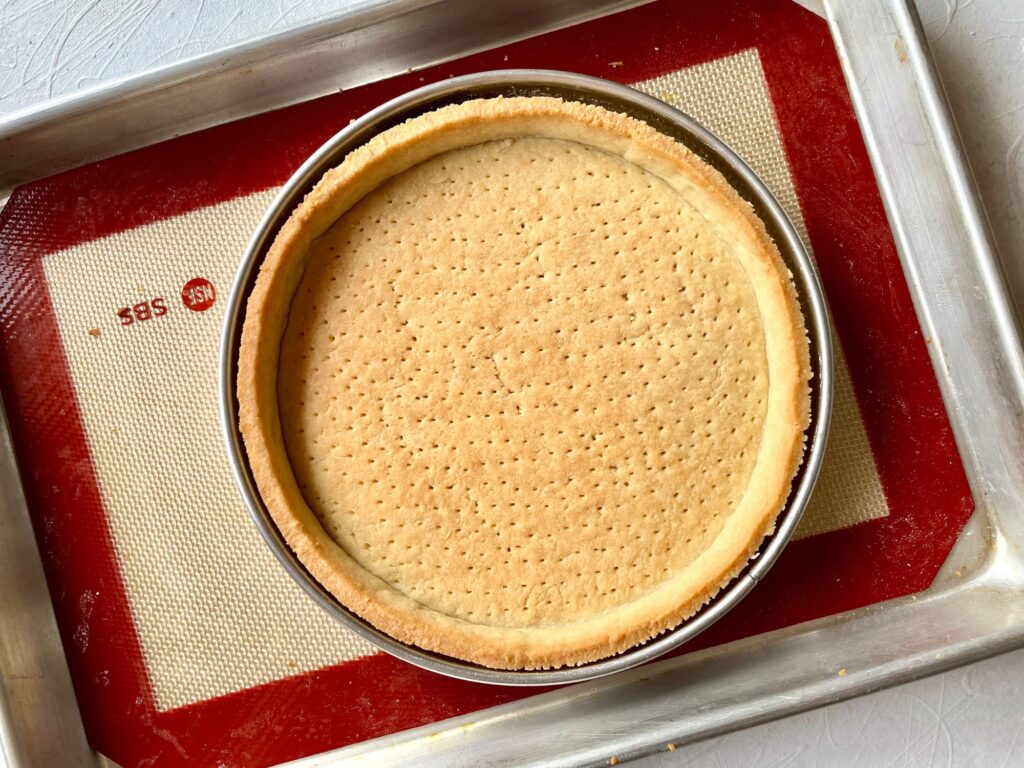
I honestly never use pie weights when baking this vegan pâte sucrée. You can if you’re not sure how it’s going to bake. But if the dough is well made and you didn’t incorporate too much air, it should bake just fine. If I do see the bottom puffing up, I simply puncture it with a fork or knife, flatten it with the back of a spoon and continue baking.
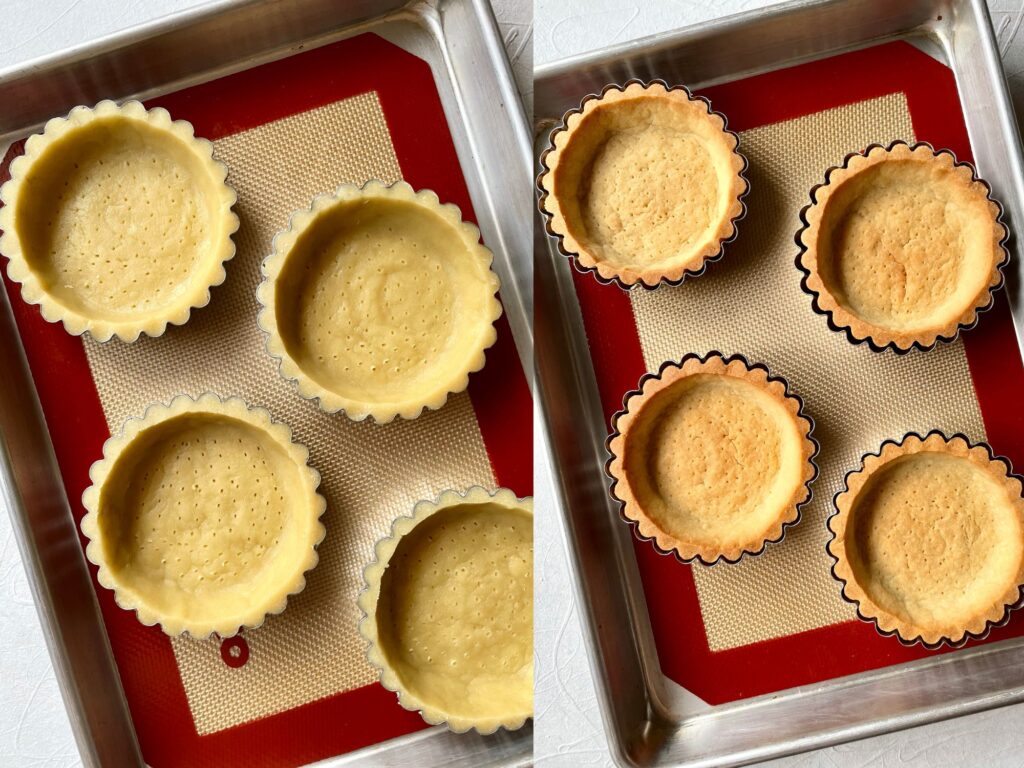
If you’re going to add a filling that needs baking like frangipane, just parbake the dough for about 10-15 minutes. But if you’re going to fill it with something that doesn’t need baking like custard, fully bake the crust for about 25 minutes.
After the tart has cooled for a few minutes, remove it from the pan and let it cool completely. At this point I like to use a Microplane just to clean up the edges and smooth them out. It’s completely optional obviously, I’m just a bit of a perfectionist.
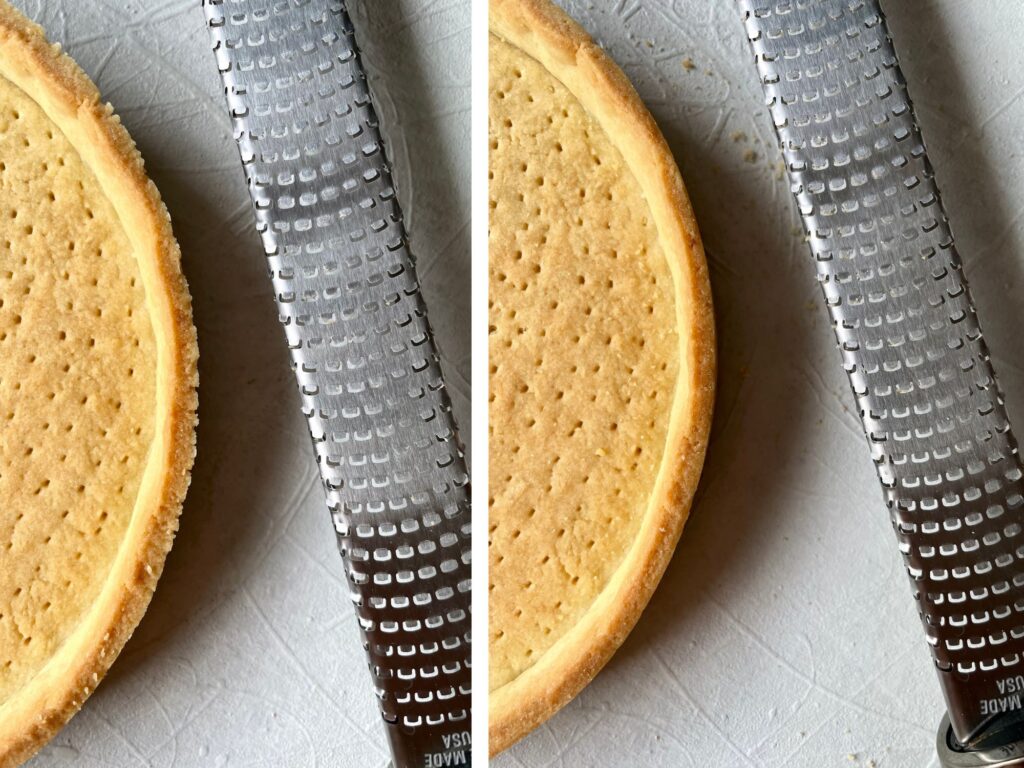
Storing pâte sucrée
Once the vegan pâte sucrée dough is made, it can be kept tightly wrapped in the fridge for about a week or in the freezer for up to 2 months. Let it thaw completely in the fridge before working with it.
You can also fully bake the tart shell and keep it in an airtight container at room temperature for up to a week. If it’s very humid where you are, about 3-5 days.
You can make and fill your tart about a day or two ahead of time if you’d like. To prevent it from getting soggy you can either brush the whole inside of the tart shell with melted cocoa butter or melted chocolate (white, milk or dark will depend on the flavour of your tart). It’ll create a sort of barrier between the crust and the filling and prevent it from getting as soggy. Of course, make sure your filling is completely cool to avoid melting that layer when you put it in.
If you make this recipe please let me know in the comments! All feedback is very much appreciated and I would love to hear from you! You can also tag me on instagram @the.quaint.kitchen or use the hashtag #thequaintkitchen to share your creations!
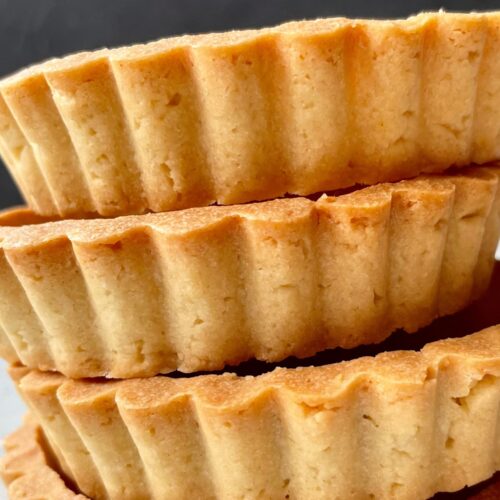
Vegan Pâte Sucrée/Shortcrust Pastry
Ingredients
- 145 g cold vegan butter, I use this one
- ⅛ tsp salt
- 115 g powdered sugar
- 40 g almond powder, or 20g all-purpose flour
- 20 g cornstarch
- 45 g plant based milk
- 250 g all-purpose flour
Instructions
- *This recipe makes one 7 inch/18cm tart and about 5 tartlets. You can also make up to a 9 or 10 inch/23 or 25 cm tart with it.
- In a large bowl, work the cold (but not rock hard) butter with a metal or wooden spoon just until pliable. Add in the salt and almond powder and sift in the powdered sugar. Stir until smooth but don’t cream them, the goal isn’t to incorporate air.
- Stir in the cornstarch and milk, the mixture will split, that’s normal. Add in 100g of the flour to smooth it out.
- Add in the rest of the flour and mix just until a dough starts to form, then go in with your hands to finish incorporating it. Once you get a smooth dough, stop mixing. You don’t want to overwork it.
- Wrap the dough in cling film (or cling film alternative) and chill it in the fridge for at least one hour or up to a week. You could also freeze it for up to 2 months.
- Once you’re ready to work with it, preheat your oven to 180°C/350°F.
- Roll out the dough on a floured surface or between two pieces of parchment to about 4mm or a bit more than ⅛ inch thick and bigger than the diameter of your pie pan. If the dough starts to soften too much, pop it in the fridge for about 10 minutes before continuing. *You can also just grab pieces of dough and press them evenly into your pie dish/pan to form the tart shell if you don’t want to roll it out.
- Transfer the rolled out dough to your pie pan and press it in evenly, making sure it gets well into the corner.
- Place the whole thing in the fridge for about 20 minutes to solidify, then trim the top edge with a paring knife and dock the bottom with a fork.
- Bake for about 15 minutes to parbake (if your filling needs to be baked) or about 25 minutes to fully bake (if your filling doesn’t need baking). For parbaking, it should be lightly golden but still a bit pale, not baked all the way through. For baking it completely, it should be a darker golden brown.
- Let the tart shell cool a few minutes before removing it from the pan (if fully baked) and letting it cool completely on a wire rack. Then you can optionally use a microplane to smooth out the edges.
Notes
- *Disclaimer: I have a tiny not-so-great oven, so your bake time may vary from mine.
- I strongly suggest making recipes by weight, if you make them by cups I can’t guarantee that you’ll get the same results.
- You can optionally add 1 tsp vanilla extract or paste to the dough. Or even spices, zests or other extracts such as almond.

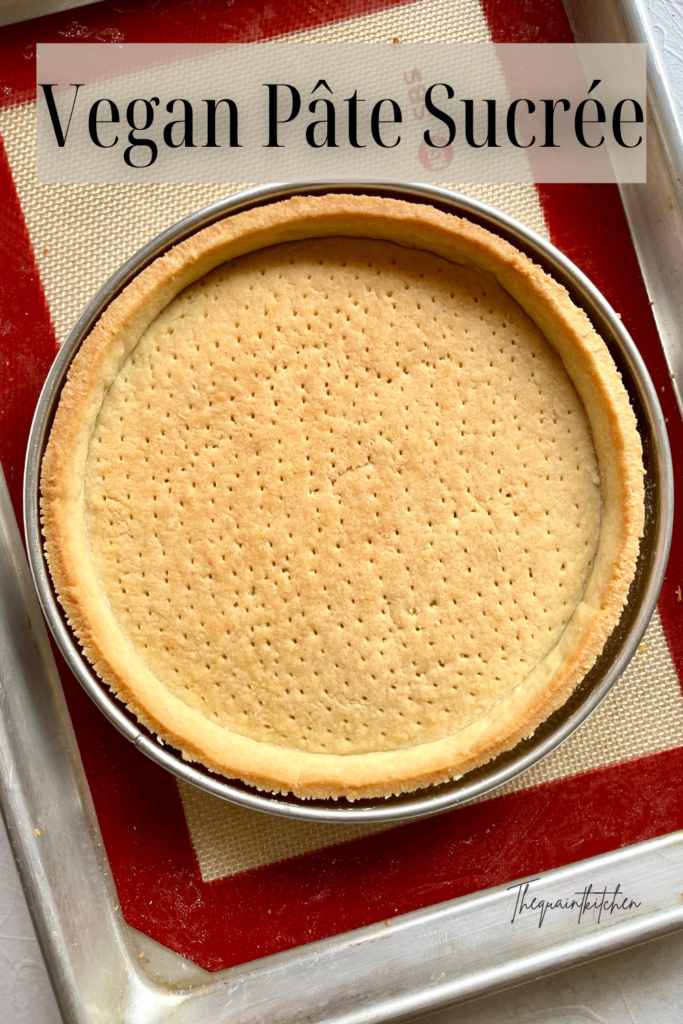
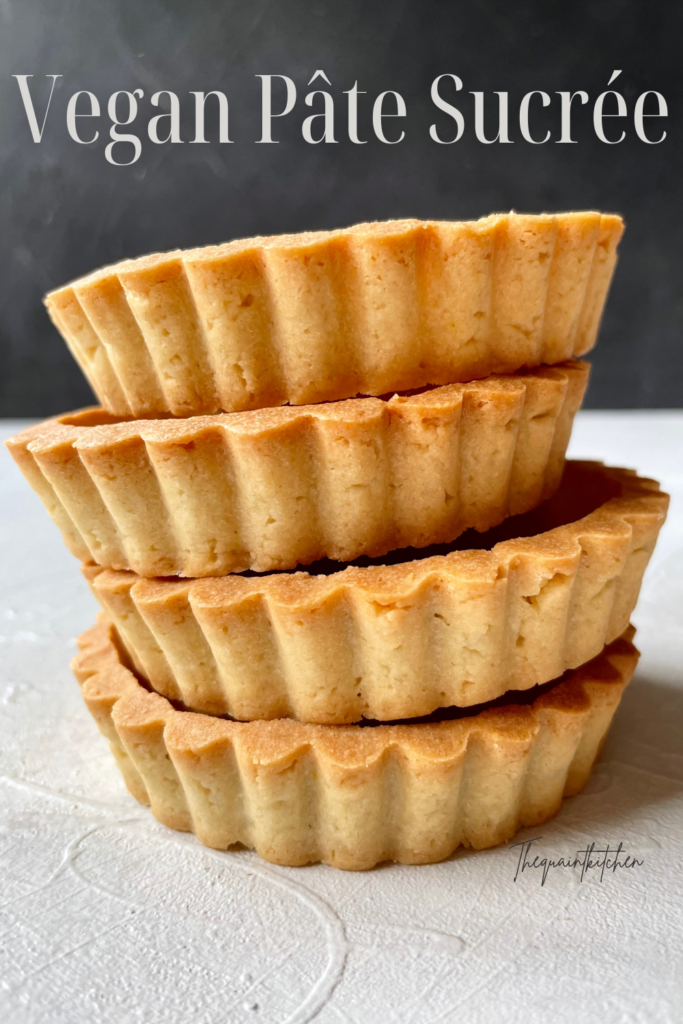
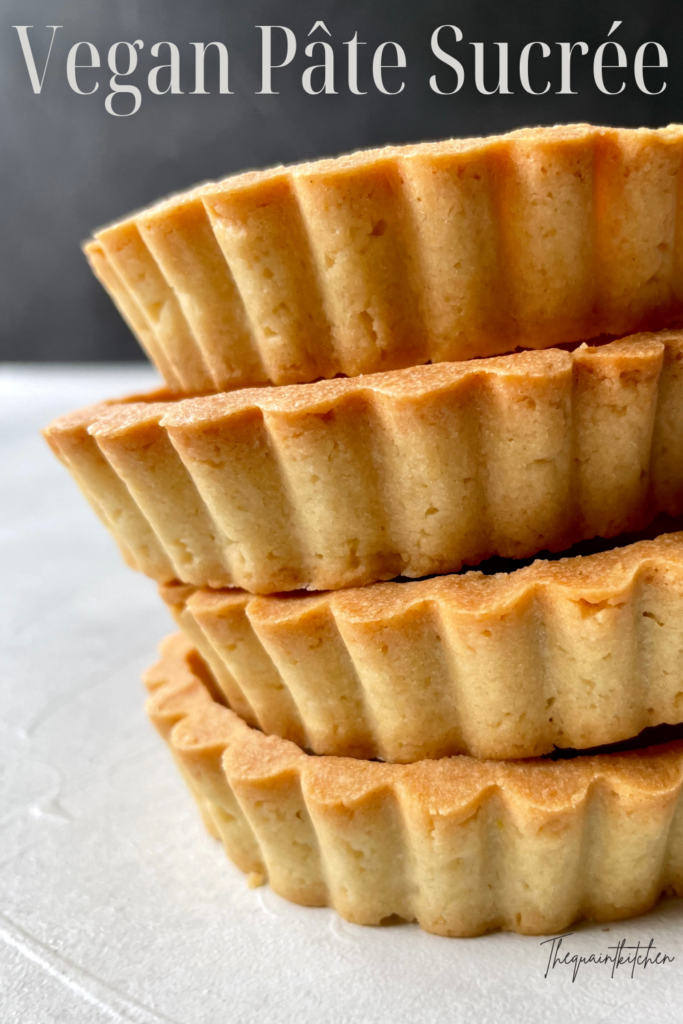
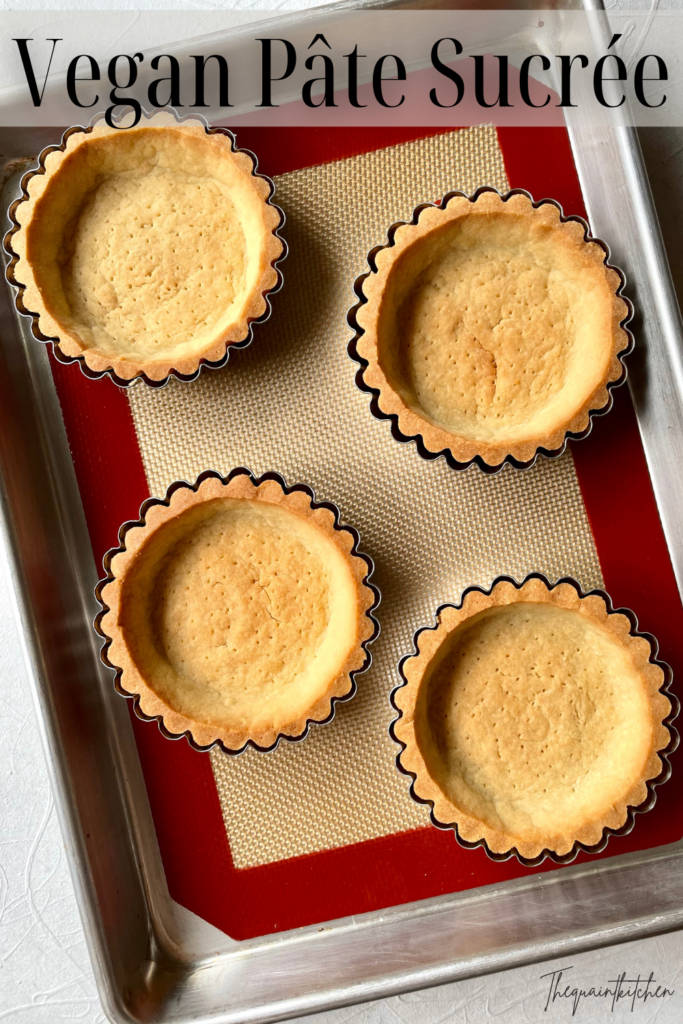
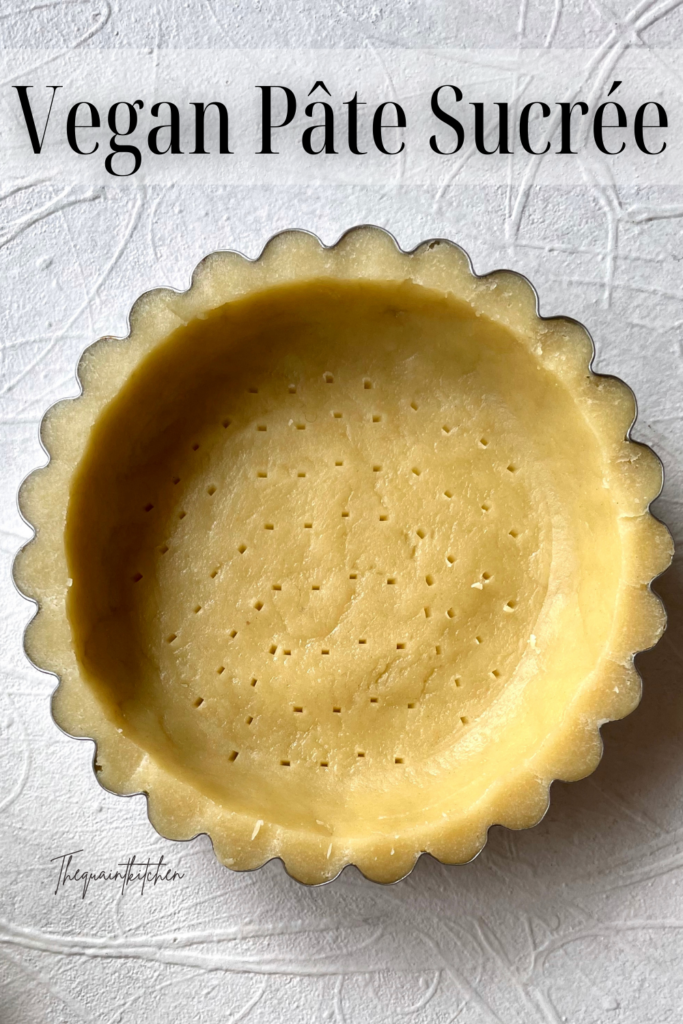
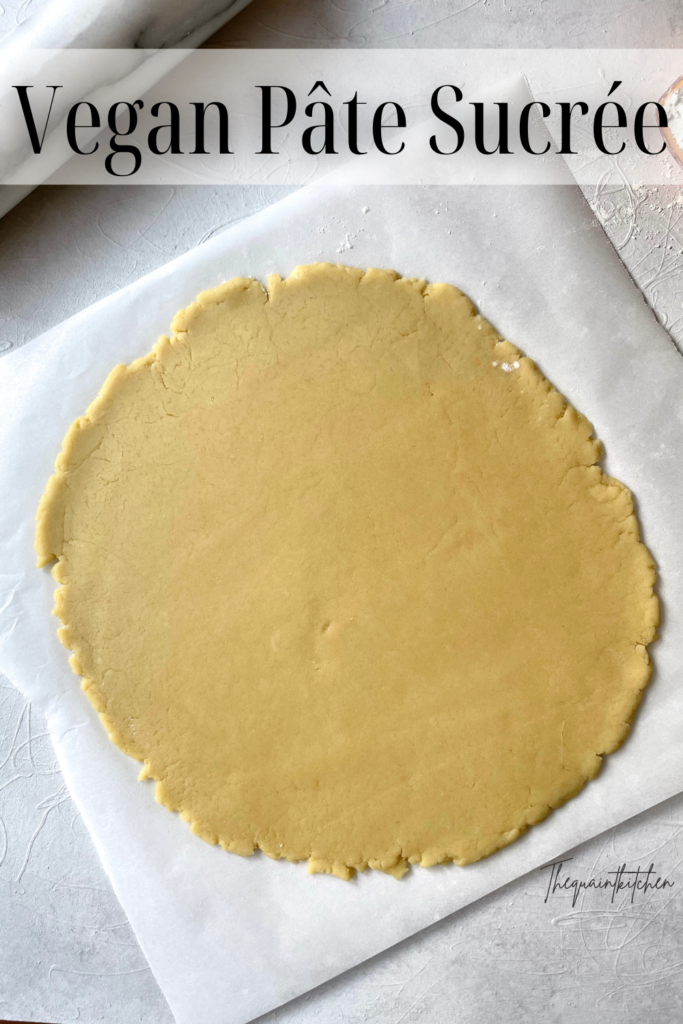
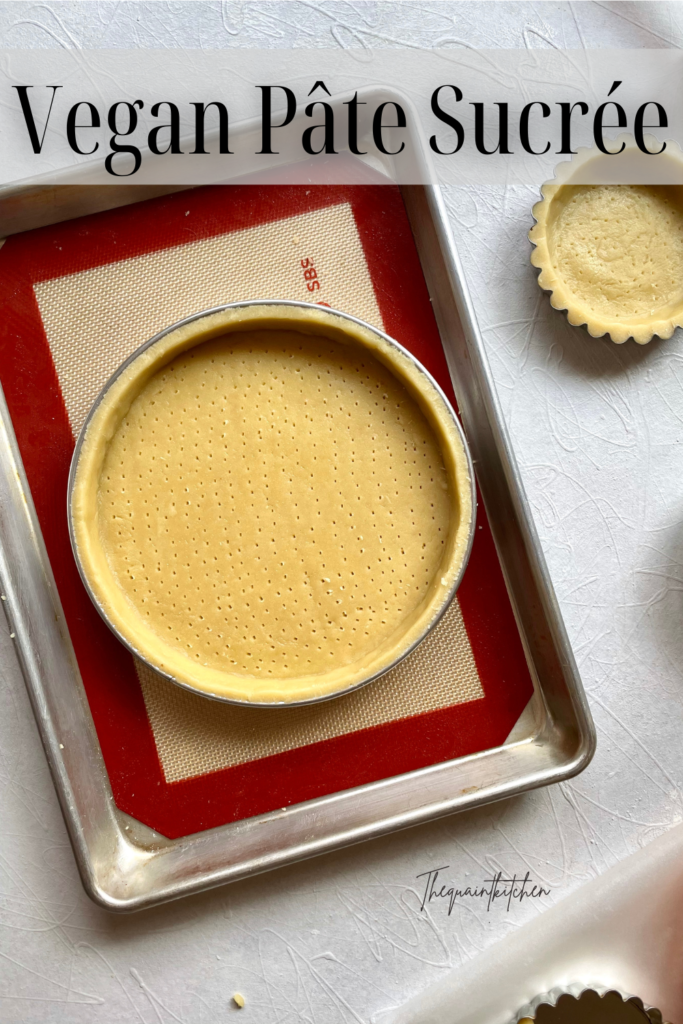
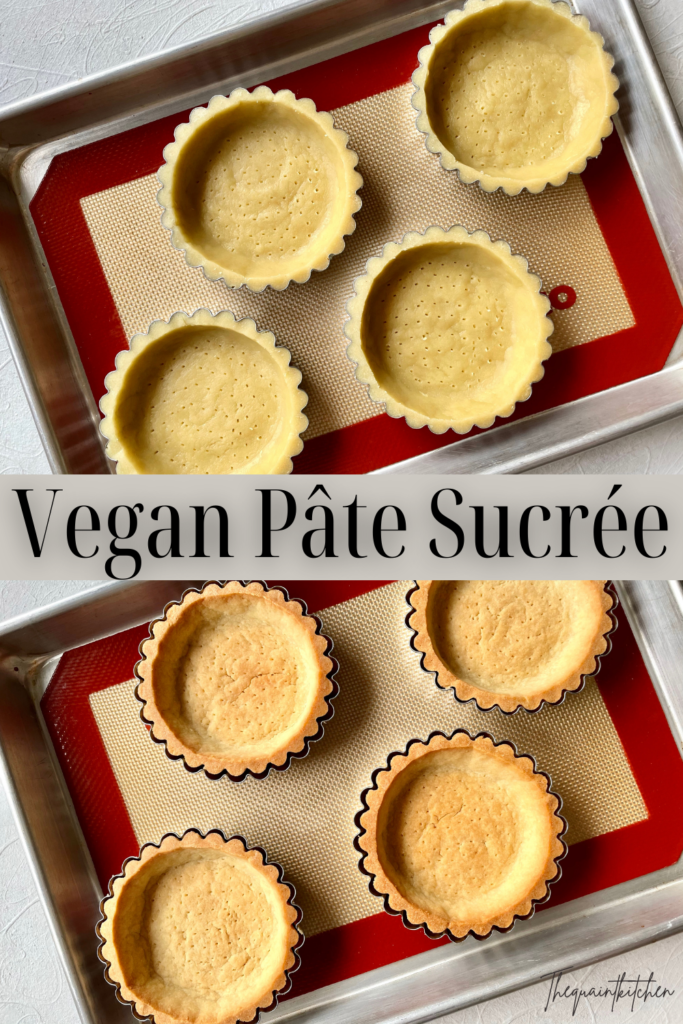
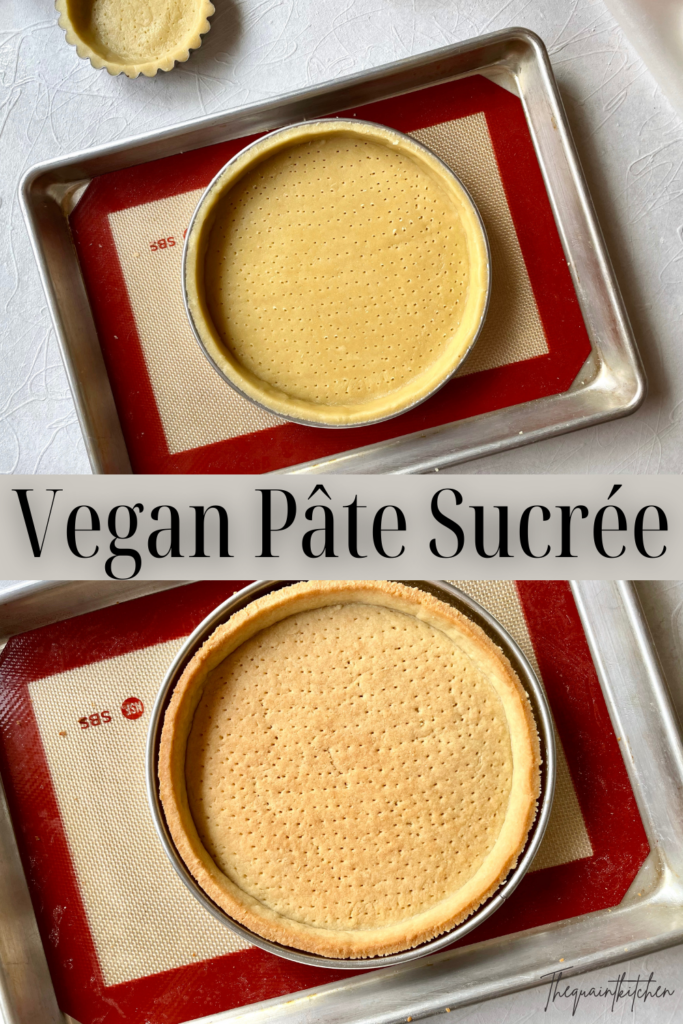
I used this pastry for a lemon meringue tart and it turned out beautifully! I ended up having to add a fair bit more flour to get the dough to come together. I am not sure why, but it was easily solved. The crust was crunchy, just a little sweet, and went perfectly with the lemon curd. I will use this recipe again!
Thank you so much for the feedback Allison! The amount of flour could be due to the butter, a more margarine-type butter will have more moisture and make the dough softer/more fragile (maybe!), glad you still liked the recipe and that it worked out! ☺️
Great recipe, worked perfectly for my tartelettes!
Awesome! I’m so glad you liked it 🙂
Reporting in from a UK egg & dairy & gluten allergy household (😭)
I used stork block (vegan butter), doves plain white gluten free flour blend, and added a 1/8 teaspoon of Xanthan gum.
After a couple of failed attempts due to sagging sides, I finally had a great result by preparing as you describe then freezing the formed, trimmed and docked pastry in the tin for 5 hours or so until it’s properly frozen, then straight into an 185c oven for 22 mins.
Thanks chef!
Reporting in from a Canadian vegan test kitchen 😅
Thanks for taking the time to comment RJ! I’m honestly amazed you persisted even after it sagged a few times instead of just calling the recipe no good. I really appreciate it. And I’m so glad it ended up working in the end, even if it did take 5 hours in the freezer!